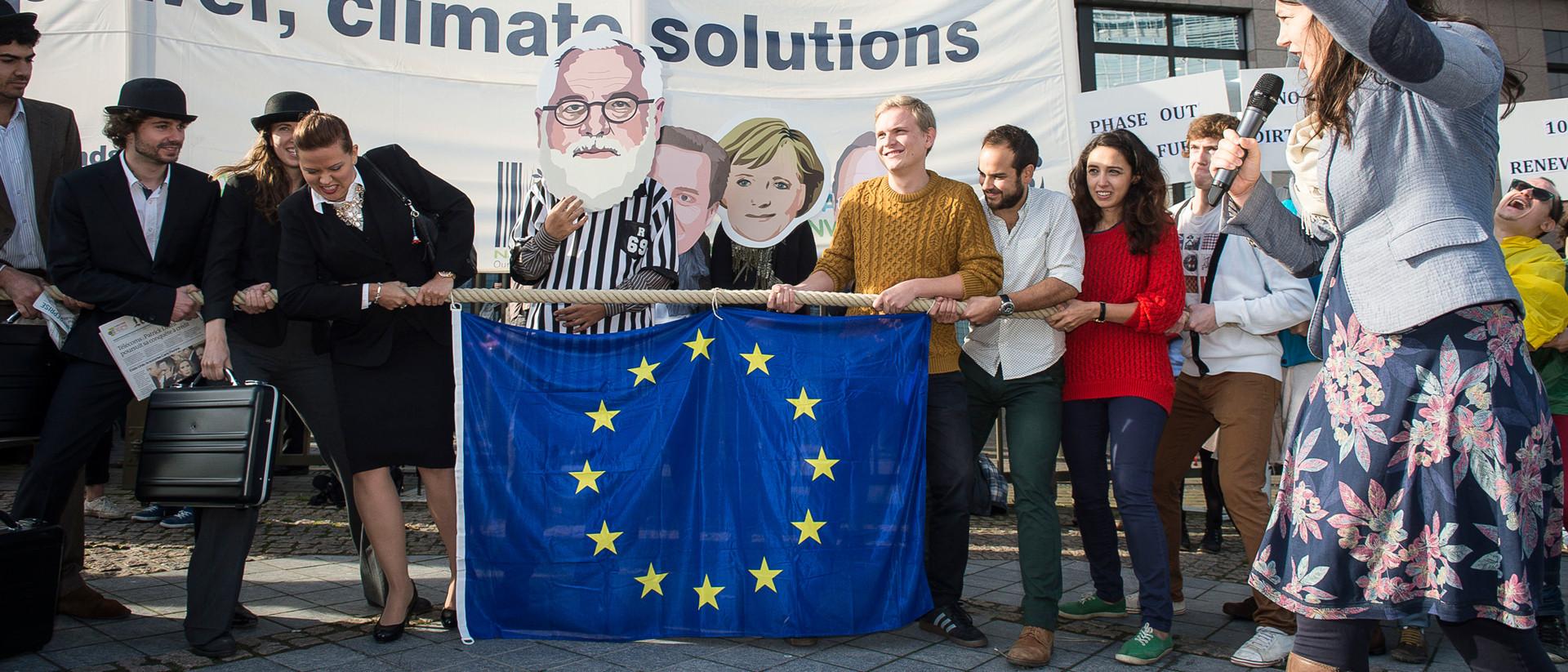Smiling broadly, Miguel Arias Cañete places his hand on Tord Lien’s shoulder and says, “Demand may rise or fall, but we will continue to need natural gas. And my friend here is a reliable supplier.”
This on-stage fawning between the Spanish European Commissioner and the Norwegian Minister is taking place at the Third EU-Norwegian Energy Conference, in the Thon Hotel in Brussels. Norway supplies almost one third of the gas consumed by EU countries, and the European Union wants to remain on friendly terms with the Norwegians, especially now the relationship with Russia, an even bigger supplier, has deteriorated. And that longing is reciprocal: Norway exports all its gas to the EU. “We are mutually dependent,” says Lien. “We depend on you for our sales; you depend on us for your supply.”
Yet in the wake of the climate conference in Paris, isn’t this the time to put a stop to that dependence? In Paris, we agreed that by the middle of this century, net emissions of greenhouse gasses would be reduced to zero – an agreement welcomed throughout the world as signaling “the end of the fossil-fuel era.”
Europe likes to congratulate itself for being a leader in the fight against climate change. Now that the bar has been raised in Paris, and the goal is to restrict global warming to within 1.5°C, you would expect that same self-appointed leader to put every effort into developing renewables and phasing out fossil fuels like natural gas. But nothing could be further from the truth.
Here, gas still has a future
Miguel Arias Cañete opened his speech by singing the praises of the victory in Paris. But according to him, that “historical agreement” does not mean the end of the natural gas era. In fact, as we make the move to a carbon-free future, he says we will need gas more than ever:
- As a substitute for the even more polluting coal.
- To compensate for fluctuations in sustainable energy sources such as sun and wind.
- In the form of Liquefied Natural Gas (LNG), a relatively clean fuel for trucks and other heavy vehicles.
On the stage in Brussels, everyone seems to agree with Cañete. Marjan van Loon, the brand new CEO of Shell Nederland, says gas is the ideal supplement to sustainable energy sources. Given the predicted 30% reduction in Dutch gas production, she points out, we’re going to need to get more gas from other countries.
The sole representative of the renewable sector in attendance also believes in gas. “It used to be the renewables against the rest,” says Oliver Schäfer, chair of SolarPower Europe, the interbranch organization whose goal is to make solar energy Europe’s most important energy source. “But I, too, believe that gas has a future within the energy mix.”
“I, too, believe that gas has a future within the energy mix”
A few days later, Cañete again proclaimed his faith in gas, when he was a guest in the packed and tropically warm conference room of the Bruegel think tank at a meeting about the impact of the Paris Agreement on European climate and energy policy.
Cañete may well be known as a skillful politician with a ready wit, but he’s not exactly a great speaker. Without looking up once, he raced through his text at breakneck speed.
“Can you follow any of this?” my neighbor, an 86-year-old emeritus professor, whispered in my ear. “It seems like it’s only about gas; he’s saying very little about renewables.”
That just about sums it up. To be sure, Cañete yet again opened his talk with the assertion that, thanks to the “historic climate agreement” of Paris, “we’ve embarked on an unprecedented journey towards a carbon neutral and sustainable world.” And yes, he announced that later this year the Commission will be presenting ambitious proposals that will give shape to the vital role renewable energy and energy efficiency will play along the way. But the contents of those plans are still only guesswork, and right now he’s devoting most of his talk to the “winter energy package” he’s presenting this week … in which gas plays the leading role.
Just what’s in those plans? What the commission wants to avoid at any cost is shortages, such as those in the winter of 2009, when Russia turned off the pipeline through Ukraine to Europe, leaving people in eastern Europe in the cold. So the Spanish European Commissioner would like every EU country to have at least three different gas suppliers. He’s also promoting regional cooperation so neighboring countries can assist one another in times of crisis. But his biggest concern seems to be keeping that gas flowing through an ever larger network of pipelines, tankers, and terminals.
Above all: LNG
At the Bruegel meeting, Cañete sang the praises above all of LNG, the liquid gas that is relatively simple to transport by land and sea. In his eyes, that stuff is the fastest and easiest way to break the monopolies of foreign suppliers. One component of the winter package is an “EU strategy for storing LNG and gas.” In a leaked version of that report, “the dramatic increase in the supply of LNG” is referred to as a “huge opportunity for the EU.”
The Spaniard didn’t cloud the discussion by mentioning that LNG is much more polluting than natural gas. The fact is, it takes a lot of energy to liquefy the gas, which can only be done at very low temperatures, and after storage it has to be converted back into a gas. So LNG almost always produces more greenhouse gas emissions than ordinary natural gas. And LNG only makes up for those extra energy costs if the gas is pumped through pipelines covering extreme distances. All of these factors are made clear in a report from the European Commission’s own scientific service.
Recently, another report commissioned by an LNG lobbying organization estimated the emission intensity of producing electricity with gas that has first been made liquid and then converted back into gas: the costs are between 494 and 547 grams of CO2 per kilowatt hour. That’s high. Because that figure, even though it’s likely an overly favorable estimate, is well above the current CO2 intensity of all electricity production in the EU. LNG is only an improvement if it replaces the even more polluting coal.
It’s also questionable whether LNG is a good choice of fuel for transport. A recent survey shows that emissions of methane, an extremely powerful greenhouse gas, are higher in ships powered by LNG than in tankers running on fuel oil.
The point is: we already have too much storage capacity
What’s also strange is that Cañete wants to improve the LNG infrastructure, at a time when there’s already enormous overcapacity. That’s something Georg Zachmann, from the Bruegel think tank, politely pointed out to the European Commissioner in that overheated conference room. A present, LNG terminals within the EU are almost 70% empty. In the Netherlands, only 7% of their capacity is utilized.
And the pipelines that lead into the EU are pumping 40% less gas than they’re capable of. Those pipelines come from just a handful of countries. With the exception of Norway, it’s not a particularly distinguished group: Russia, Algeria, and Libya. In order to reduce dependence on those partners, Cañete would like to expand that illustrious club, with Azerbaijan and Iran, for instance. That way, he hopes to secure gas supplies via the Southern Gas Corridor, a pipeline planned to run from the Caspian Sea to Italy; a project that has been given top priority by the European Commission.
It’s also interesting to note the striking list of countries where he hopes to obtain LNG. In addition to Australia, that list boasts such countries as Qatar, Libya, Algeria, Angola, Iraq, and Iran. All countries with a poor score on the Liberty Index.
So Zachmann put an alternative idea to Cañete. At the moment, the European Commission seems primarily obsessed with the idea that we need to be less dependent on one supplier, namely Russia. But, suggested Zachmann, maybe gas security doesn’t only come down to the largest supplier’s share.
Natural gas guzzles European energy twice over once in the effort to get it here, and again in the battle over which route to use.
What’s key is the availability of alternatives in times of crisis. Given that the present pipelines and storage facilities have enormous overcapacity, the prime concern should not be to construct new infrastructure, but to make solid agreements about how to tap into each other’s reserve capacity in times of need.
The European Commission does indeed seem to have a huge desire to lay new pipelines and create new storage facilities. On the EU’s list of high-priority “projects of common interest,” we find the Galsi pipeline between Algeria and Italy, the Southern Gas Corridor between the Caspian Sea and Italy, and a pipeline between the EU and Turkmenistan, plus LNG terminals in such places as Greece, Hungary, Sweden, and Poland. On that list, the word “gas” is used 47 times, “wind” four times, and “sun” not once.
The list makes no mention of Nord Stream 2. That project would double the capacity of the pipelines which run through the Baltic from Russia to Germany. Despite Cañete’s best intentions to form a common European energy policy, the project remains extremely divisive. Eastern European countries are afraid of being left out in the cold and losing enormous amounts of income if, in the future, Russia can deliver gas to Western Europe without utilizing the transit pipelines through Poland and Ukraine. The European Commission sees Nord Stream 2 as politically undesirable and is trying to find legal arguments to prevent it, but with little success, reports say.
So that’s how gas guzzles European energy twice over: huge efforts to get it here, and huge battles over how and where we get it.
So what about Cañete’s sustainable plans?
OK, maybe Cañetes’ fierce determination to secure new pipelines, new gas terminals, and new suppliers is a little excessive. But surely the point remains that in the coming decades we will still need natural gas as a bridge to a sustainable future?
There are a fair few arguments against using gas as a transitional fuel, such as those presented by guest correspondent Han van de Wiel. But even if we acknowledge that, for the time being, we can’t get along without this fossil fuel, the question remains: where should we be focusing our attention: on plans to secure the supply of gas, or on possibilities for accelerating the implementation of renewable forms of energy and reducing energy consumption?
You might object: why not just wait for those sustainable plans before getting up in arms? But: if the EU were to commit more strongly to renewable energy and energy efficiency, there would be less need to keep the supply of gas at an acceptable level, let stand to create new infrastructure.
The EU’s present goal is to increase energy efficiency – the ratio between energy use and its output in terms of goods and services – by 27% by 2030. Each percentage point of increased efficiency ensures a 2.6% decrease in gas imports, the European Commission itself claims. So if the EU lives up to its own ambitions, we’ll have much less need of that gas anyway.
Certainly if the Commission increased that target figure for energy efficiency a bit more – and a fierce battle is now raging over just that. The European Parliament recently forced Cañete to examine the economic feasibility of a higher efficiency rate, as high as 40 percent. Because critics have claimed that the Commission underestimates the favorable impact such an increase would have.
Cañete’s response at the Breugel meeting was to state that all ideas and scenarios are welcome. That’s because the Paris objective that by 2050 we should have stopped pumping more greenhouse gasses into the atmosphere than we get out also means “a revolution in a social and economic domain in which we will need the help of all the think tanks.”
But when a representative of a company in the sustainability business asked about his plans for renewable energy, Cañete didn’t get much further than a few clichés about “innovation, innovation, innovation” and a “level playing field.” That doesn’t exactly offer much hope that he’ll come up with spectacular plans later this year.
What was also revealing was his response to questions about the price of CO2 emissions. The European Commission considers the system of emissions trading as the “cornerstone of the policy to combat climate change.” The idea is that if the number of emission allowances issued is reduced, market forces will ensure that the price for emissions goes up. And then companies will have no choice but to make production cleaner.
It sounds great, but in practice the system of emissions trading has the opposite effect. That’s the conclusion reached by doctoral candidate Arnold Mulder, who has studied the system in detail in his PhD research. “The more solar panels you install, the more emission allowances come onto the market, and the cheaper they become,” he explains in Dutch newspaper NRC Handelsblad. “The system of emissions trading has turned the entire program of sustainable policy in Europe into a sham,” according to Mulder’s conclusions.
But what’s the alternative? Introducing a CO2 tax would be much more beneficial, says Mulder. That would make it more attractive to invest in sustainable technology. Or, if a tax on CO2 isn’t politically feasible, at the very least set a minimum price for CO2.
This is not just some crazy ivory tower idea. At a meeting in Paris with the French Minister for the environment Ségolène Royal, the Dutch State Secretary Sharon Dijksma advocated a worldwide price on CO2 emissions. This was one of the ideas the Netherlands hoped to put on the agenda at meetings with European environment Ministers during its EU presidency earlier this year.
At Bruegel too, several participants put forward the idea. But Cañete would hear nothing of it. “We can’t change the policy every few days,” he said.
This week, the European Commission will present its winter energy package. A few details may change here and there. But the versions previously leaked, along with hints from the Spanish European Commissioner, gave little reason to hope that Cañete will prove to be the leader needed to bring about the revolution – a revolution even he feels is essential.
—Translated from Dutch by Eileen Stevens and Mark Speer
More from The Correspondent?
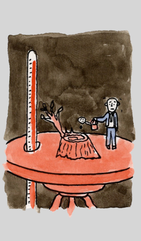
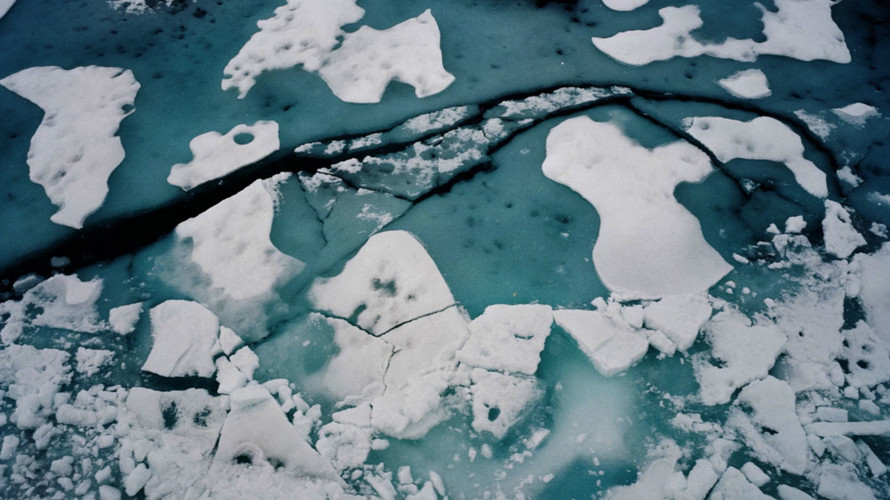 Climate Change 101: Our future on a warming planet
Right now, it looks as if life on earth is going to get a lot more uncomfortable, thanks to the effects of global warming. But it’s precisely in periods of great change that our decisions, our actions – and the stories we tell one another – make the biggest difference. In this crash course, we explore why global warming is dangerous and what’s being done to put a stop to it.
Climate Change 101: Our future on a warming planet
Right now, it looks as if life on earth is going to get a lot more uncomfortable, thanks to the effects of global warming. But it’s precisely in periods of great change that our decisions, our actions – and the stories we tell one another – make the biggest difference. In this crash course, we explore why global warming is dangerous and what’s being done to put a stop to it.
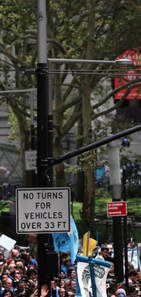
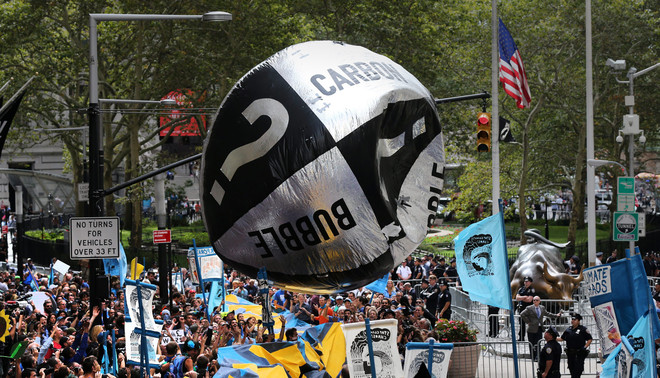 This financial analyst is certain: fossil-fuel companies are past their prime
It’s no longer safe to invest in coal, oil, and natural gas companies, according to financial analyst Mark Campanale. Pension funds must divest and move their money into green investments. That will lower risks and help transition to sustainability, he says.
This financial analyst is certain: fossil-fuel companies are past their prime
It’s no longer safe to invest in coal, oil, and natural gas companies, according to financial analyst Mark Campanale. Pension funds must divest and move their money into green investments. That will lower risks and help transition to sustainability, he says.
 Judge forces the Dutch government to take action on climate, with revolutionary implications
On Wednesday a judge ordered the State of the Netherlands to reduce greenhouse gas emissions by 25% by 2020. It could prove a revolutionary ruling. I followed the case from the beginning and talk here about the background to the case, why the state is none too happy with the ruling, and what the global consequences might be.
Judge forces the Dutch government to take action on climate, with revolutionary implications
On Wednesday a judge ordered the State of the Netherlands to reduce greenhouse gas emissions by 25% by 2020. It could prove a revolutionary ruling. I followed the case from the beginning and talk here about the background to the case, why the state is none too happy with the ruling, and what the global consequences might be.



